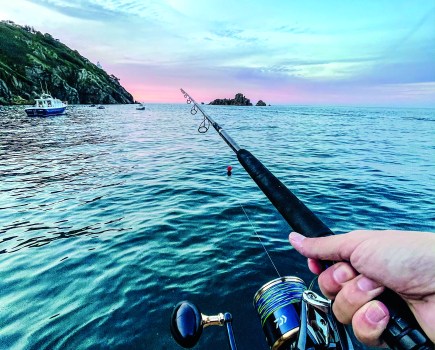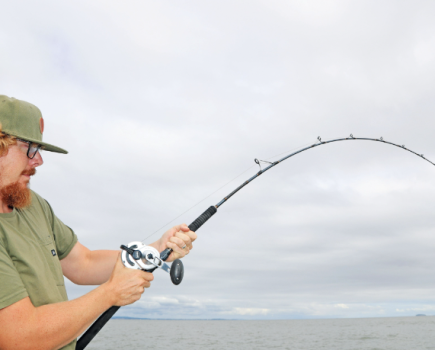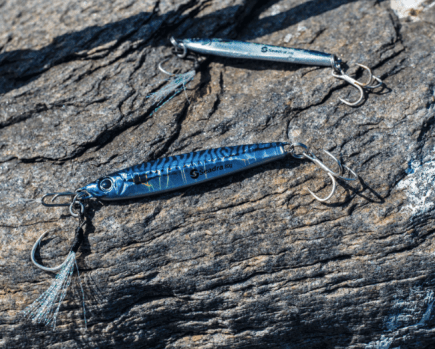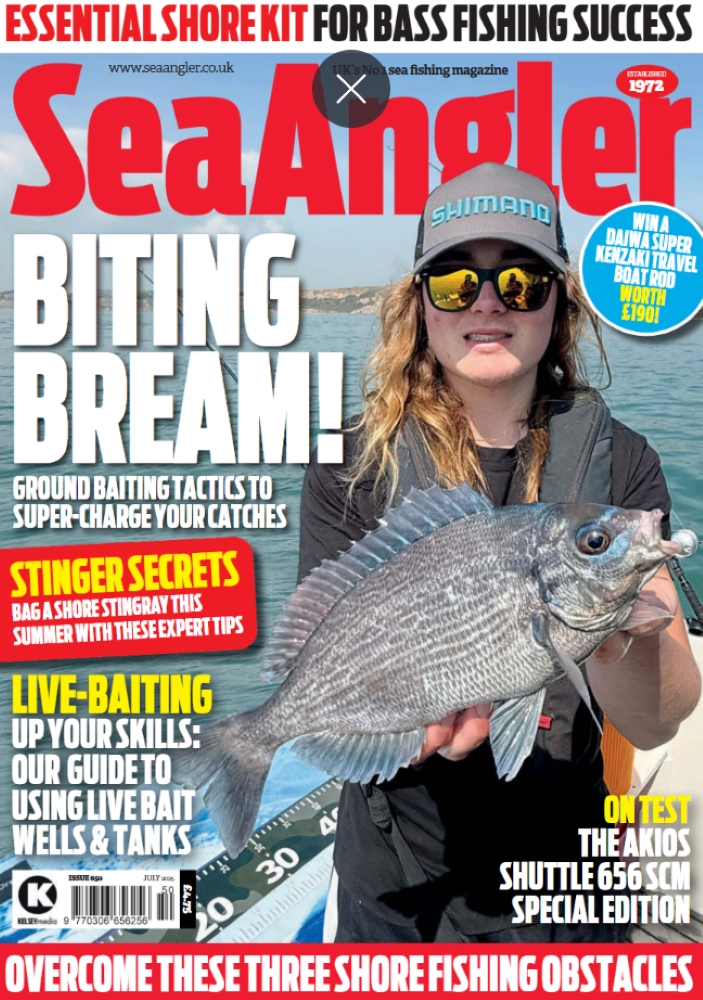You can’t cast or fish without a sinker. They tow your tackle through the air and rapidly sink it to the sea bed where the fish are waiting. But do you know what’s available?
Casting distance usually influences the design of a beach-launched lead weight, sometimes known as a sinker. This is why aerodynamic shapes, like the bomb and torpedo, have proved the most efficient…although there are a few quirky designs too.
Usually made of lead and produced in a range of weights, which is why we call them leads or weights, suitable shore sinkers range between 2oz to 8oz. Check your rod’s casting rating for the weight of lead it is best suited to cast.
Four ounces is usually the minimum for most shore fi shing situations with a 5oz or even 6oz lead the best all round and most practical when casting baited hooks. Heavier leads up to 8oz are occasionally used to punch baits through a strong head or side wind or to keep tackle anchored in a rough sea.
Tide and wind pressure on the line is what moves the lead and terminal rig and obviously the further the cast the more pressure there is placed on the greater length of line and the lead’s grip.
Keeping your bait in position is one of the most essential tactics in shore angling, especially when the sea environment is hostile.
Wired grip leads
Because most sea angling takes place in tide many sea anglers choose a wire grip design of sinker for almost all of their coastal fishing. This type has four wire spikes to help grip the sea bed and is produced commercially in various shapes and sizes. Think of it as an anchor.
1 Breakout lead: The most popular designs are the original breakout produced by Breakaway. They come in torpedo and bomb shapes. These feature twin tensioned grip wires that snap open when the lead is retrieved allowing it to be pulled over stones and weeds without the wires catching in the sea bed.
The Gemini breakout design has a different single wire release system with optional screw-in heads.
Tackle dealers often make their own versions to suit conditions in their area.
2 Fixed wire: Venues such as deep water piers and narrow estuaries, where tide and currents are strong, require a weight that sinks quickly and offers maximum grip and the fixed-wired style is perfect in these fishing situations.
They are more difficult to retrieve because the wire grips catch on the sea bed as they are pulled back, although with several grades of wire stiffness available the angler can reduce this problem.
Bend wires in a U shape to improve grip and boost your chances of getting tackle out of snags.
3 Screw head: The Gemini lead type offers a range of different coloured screw in heads with different wire configurations (fixed and breakout) for the range of tide strengths. There are also three wire strengths, soft (coloured blue), springy (red) or stiff (yellow).
4 Long wires: Grip wire length can be used to alter the grip of a lead. Plastic tubing is used to support the grip wires so that they can be bent away from the lead to add extra grip. Long, open grip wires are easier to spring out.
5 Long tail: A long tail wire is said to cast straighter, like a dart, and that can be useful with large baits that are likely to wobble when cast. A long tail also offers some anti-tangle properties when a snood below the weight is used.
6 Impact: This is the latest Breakaway design with built-in bait clip that releases the hook bait on impact with the sea.
Plain sinkers
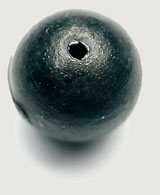 These are designed for fishing in less tidal conditions, like estuaries and harbours, or to allow the bait to move with the current. They go down to 2oz.
These are designed for fishing in less tidal conditions, like estuaries and harbours, or to allow the bait to move with the current. They go down to 2oz.
There are different shapes that offer partial grip without the use of wires. These give you options in terms of allowing the bait to creep down the tide slowly and without wires, which may spook fish.
7 Bomb, pear and torpedo: The most streamline shapes suitable for casting that let a bait to trundle down the tide.
8 Ball or sphere: This shape ought to be the favourite for casting, but it’s not in common use.
The drilled ball or bullet, pictured right, is used for float fishing or a running leger rig.
9 Flat, spoon or lift: Grips the sea bed or skims up in the water helping to avoid rocks and snags.
10 Watch, lighthouse, star and pyramid: Used for grip in sand and mud.
11 Camouflage: Originating from the carp fishing scene in a bid to disguise rigs, these lightweight leads are shaped like a twig, stone or mussel.
They could be useful when fishing small creeks for the likes of flounders, mullet and bass.
 Feeder leads
Feeder leads
13 A recent innovation that incorporates a wire or plastic cage or container for carrying bait to the sea bed. They are generally used for medium range fishing and are not that streamlined for casting.
Effective for match fishing when small fish are the target.
There is also the Intakl lead, which has a sealed compartment that opens on hitting the sea bed to release the hook bait. This is used for casting delicate worm baits or shellfish that may otherwise break up on contact with the surface.
 A common mistake of novice anglers when they encounter strong tide is to clip on two small grip leads. This prevents either from gripping and a better solution is a more compact heavy wired lead.
A common mistake of novice anglers when they encounter strong tide is to clip on two small grip leads. This prevents either from gripping and a better solution is a more compact heavy wired lead.




